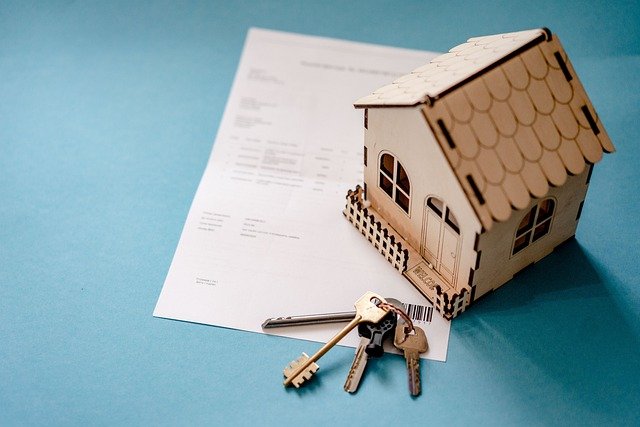Cost versus value: choosing upgrades that justify financing
Deciding which home upgrades to finance requires more than desire; it needs a clear view of costs, likely returns, and how a loan fits into your overall budget. This article explains how to weigh renovation choices, compare financing options, and plan for appraisal, permits, and repayment in a realistic way.

A thoughtful renovation can improve daily life and impact a property’s resale value, but financing those improvements requires careful balancing of cost, projected value, and personal finances. Before signing for a loan, consider the likely return on investment, how the work will affect your home’s appraisal and equity, and whether your credit and overall budget support the repayment and interest obligations. Mapping a realistic timeline and contingency for unforeseen issues helps ensure the upgrades you choose make financial sense.
Which renovations most often justify financing?
Major updates that typically influence resale value include kitchen and bathroom remodels, replacing roofs, and upgrading HVAC or windows. These projects can improve marketability and comfort, but the precise value added varies by local market and existing home condition. When assessing whether to finance, compare the expected increase in appraisal value and equity against the total renovation cost and loan interest. Smaller cosmetic changes usually offer lower returns, so financing them may be less justifiable unless they are part of a larger plan.
How should financing and budget fit together?
Develop a realistic budget that separates hard costs (materials, labor) and soft costs (permits, design fees, contingency). Determine how much you can pay from savings versus how much requires a loan, and model scenarios for repayment under different interest rates. Track the impact of loan interest on the total cost of ownership; a low-interest loan with a clear repayment timeline is generally preferable to high-interest credit. Use an estimate for monthly repayment and ensure it fits comfortably within your budget to avoid stress on other financial priorities.
How to work with contractors, permits, and timelines?
Get multiple written estimates from licensed contractors to compare scopes and prices, and confirm whether subcontractors or materials might extend the timeline. Factor permitting fees and inspection timelines into your schedule—delays can increase costs and push back the date when the renovation adds value. Include a contingency (commonly 10–20%) for unexpected issues discovered during renovation. Clear communication with contractors about milestones and payment schedules protects both your timeline and budget.
How do appraisal, equity, credit, and eligibility influence choices?
An appraisal and current equity position can determine what financing products are available: homeowners with significant equity may qualify for home equity loans or lines of credit at lower interest rates, while those with limited equity might rely on unsecured personal loans or contractor financing. Lenders assess credit and eligibility based on credit score, debt-to-income ratio, and employment history; better credit usually secures lower interest. Consider how refinancing later could consolidate renovation debt or take advantage of improved rates if equity grows post-renovation.
Real-world cost and pricing insights before you borrow
Typical renovation costs vary widely by region and scope. As a rough guide, midrange kitchen remodels often run from several thousand to tens of thousands of dollars; bathroom updates commonly range lower but can still total thousands. Exterior work—roofing or siding—often represents a large single expense. Financing choices shift total cost because of interest and fees, so compare loan estimates and contractor bids closely. Always request itemized estimates and verify contractors’ credentials and local permit requirements to avoid surprise expenses.
| Product/Service | Provider | Cost Estimation |
|---|---|---|
| Unsecured personal loan for renovation | LightStream (Truist) | Interest and terms vary; typical estimates ~6–20% APR; loans $5,000–$100,000 (estimate) |
| Home improvement personal loan / HELOC | Wells Fargo | HELOC and personal loan options; interest depends on credit and product; estimate variable 5–14% for secured options |
| Home equity loan / HELOC | Bank of America | Secured loans often have lower rates; estimate 4–12% depending on equity and term |
| Unsecured personal loan | SoFi | Personal loan ranges; estimated interest ~6–18% depending on credit; loan sizes $5,000–$100,000 |
| Marketplace / peer-to-peer personal loan | LendingClub | Rate estimates widely variable ~8–24% depending on credit and term |
Prices, rates, or cost estimates mentioned in this article are based on the latest available information but may change over time. Independent research is advised before making financial decisions.
Planning repayment, contingency, and options to refinance
Estimate monthly repayment based on interest and term, and include that figure in your household budget to test affordability. Maintain a contingency fund for overruns and consider shorter loan terms if you can afford higher monthly payments to reduce total interest. If property value or equity rises after renovations, refinancing may offer a route to lower rates or consolidate debt; model refinance scenarios and account for closing costs. Keep documentation of permits, contractor warranties, and appraisal increases to support any refinancing or future sale.
Balancing cost versus value means aligning practical needs, expected returns, and personal finances. By gathering multiple estimates, confirming contractor qualifications and permits, and comparing verified financing providers with realistic rate assumptions, you can choose upgrades that justify borrowing without overstretching your budget.






